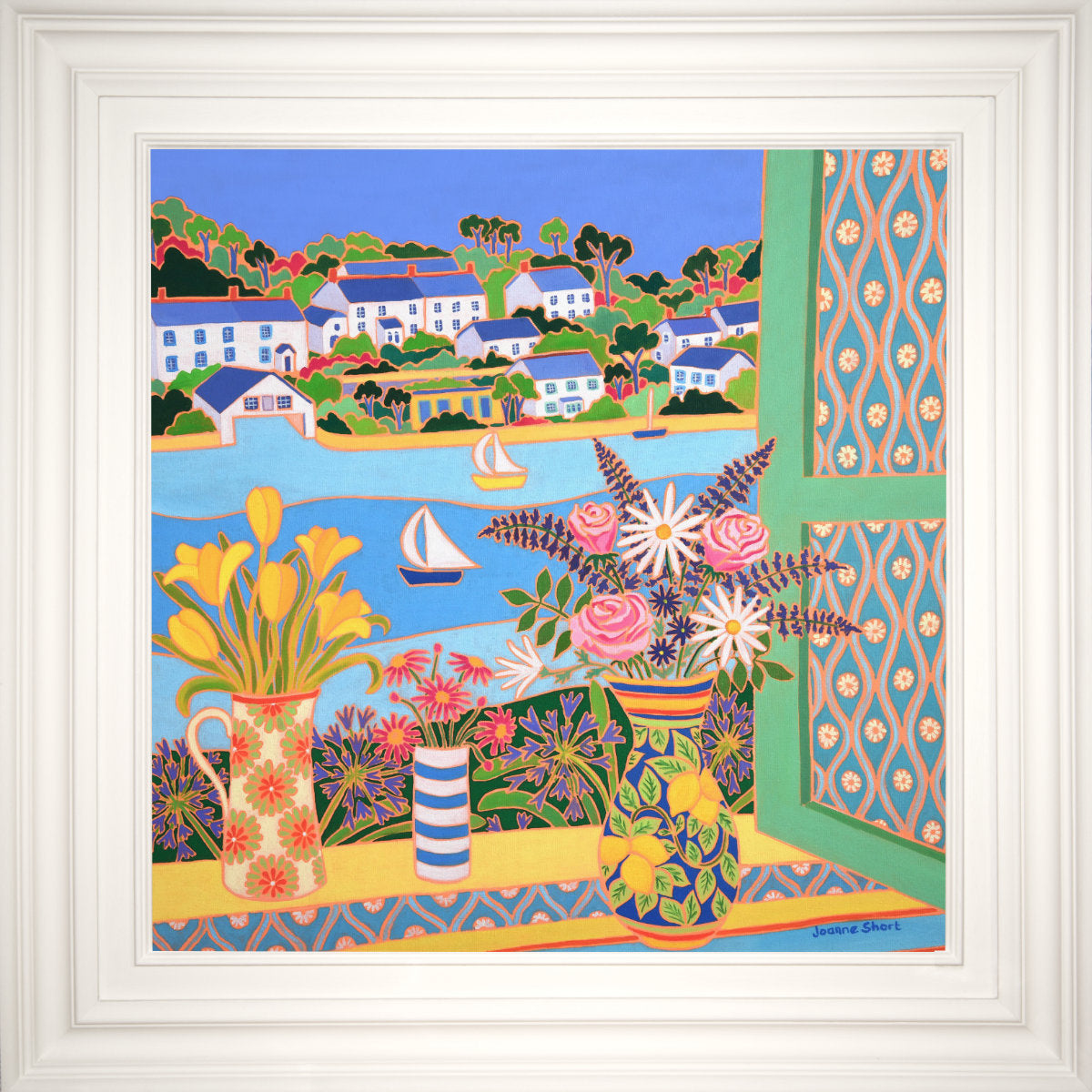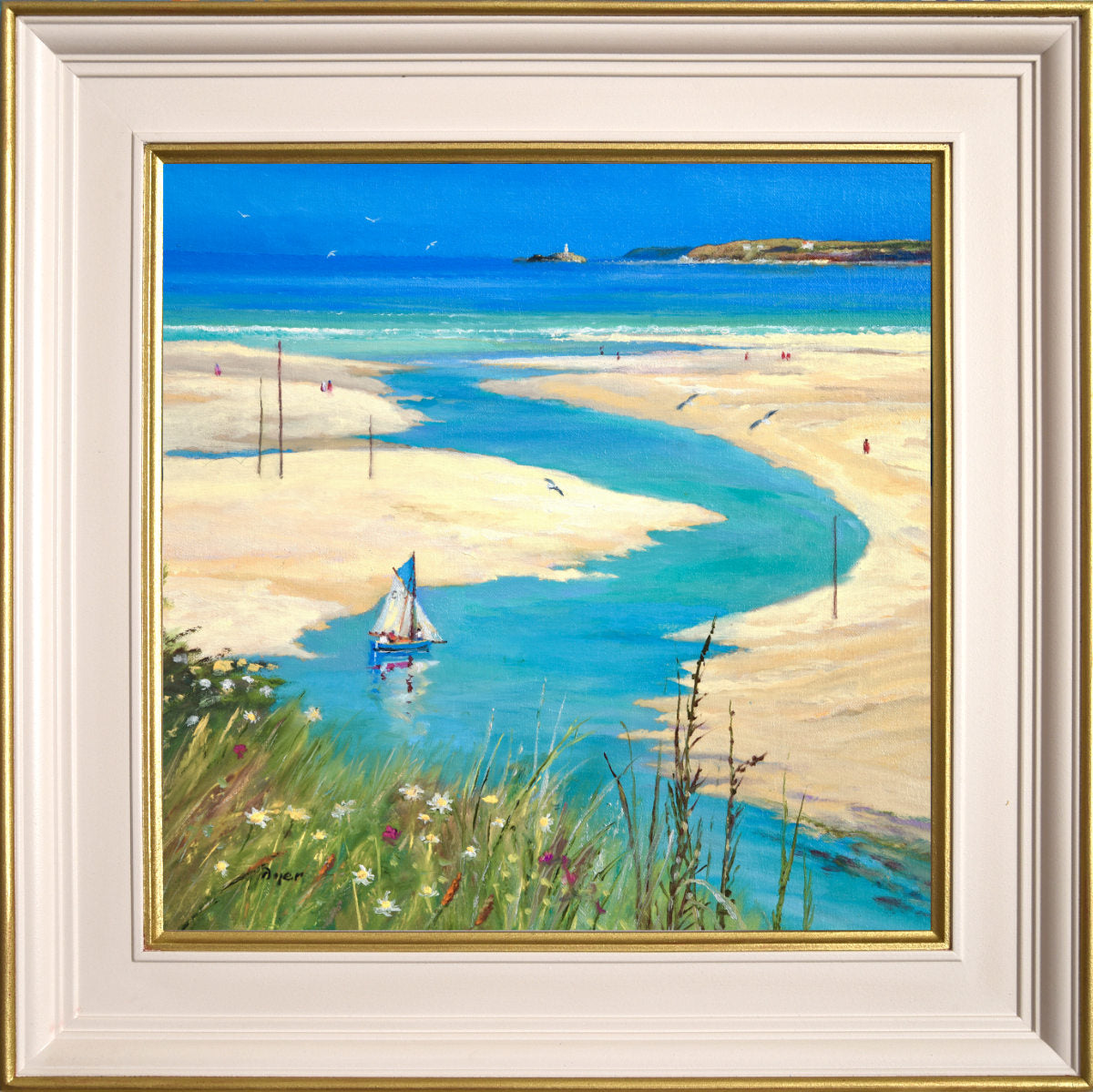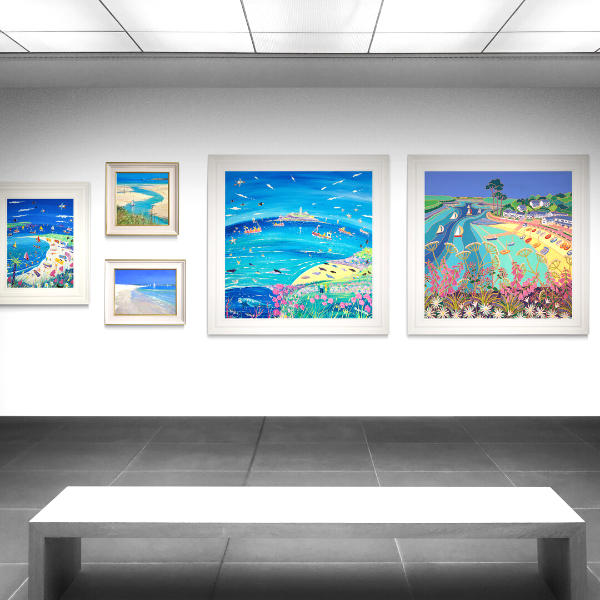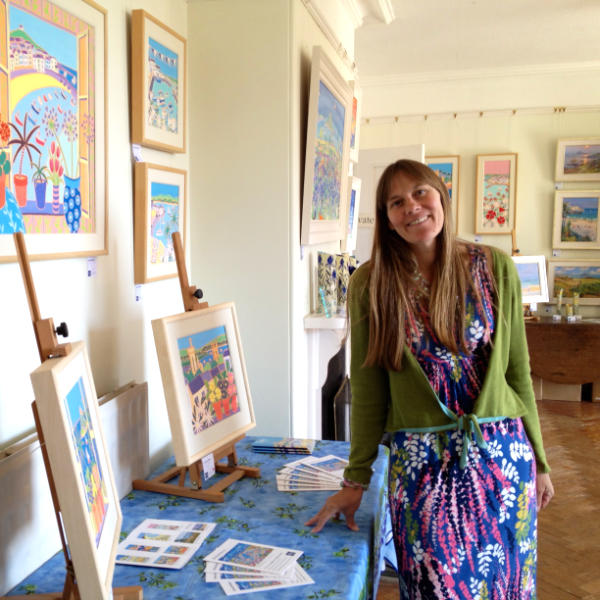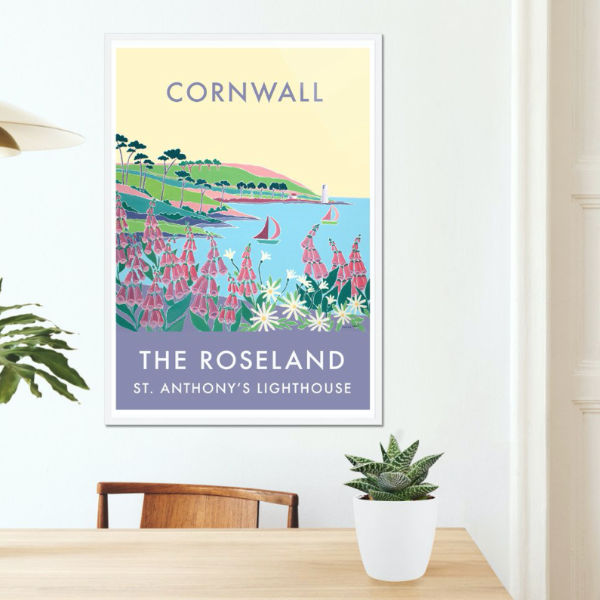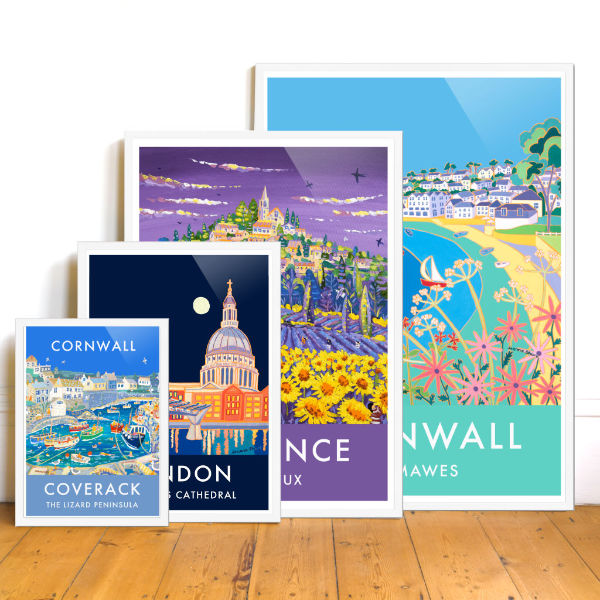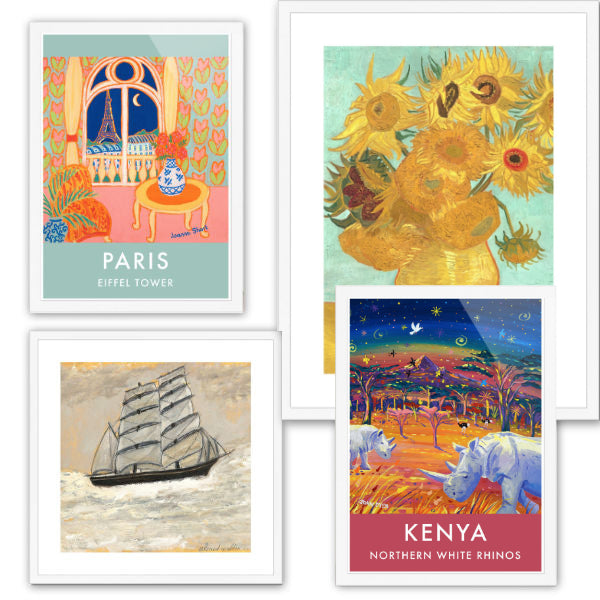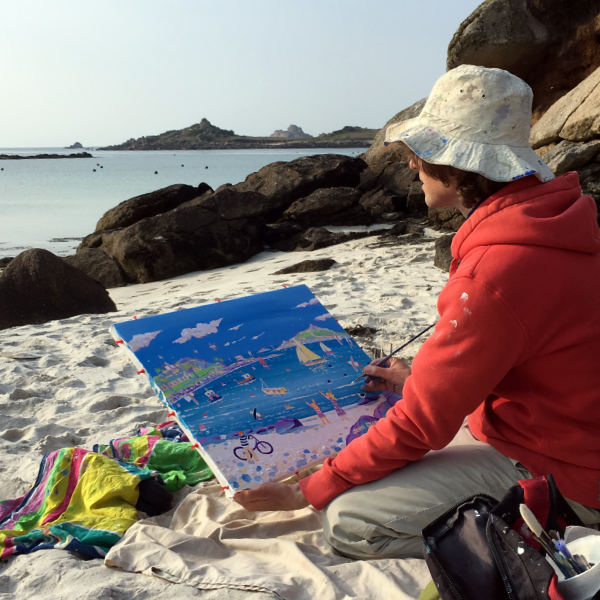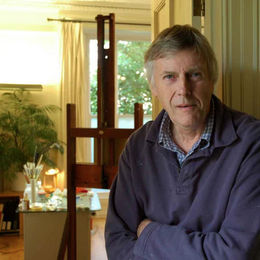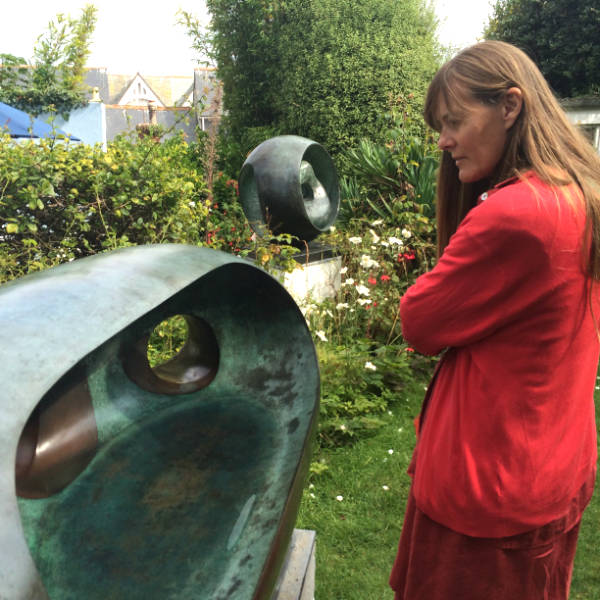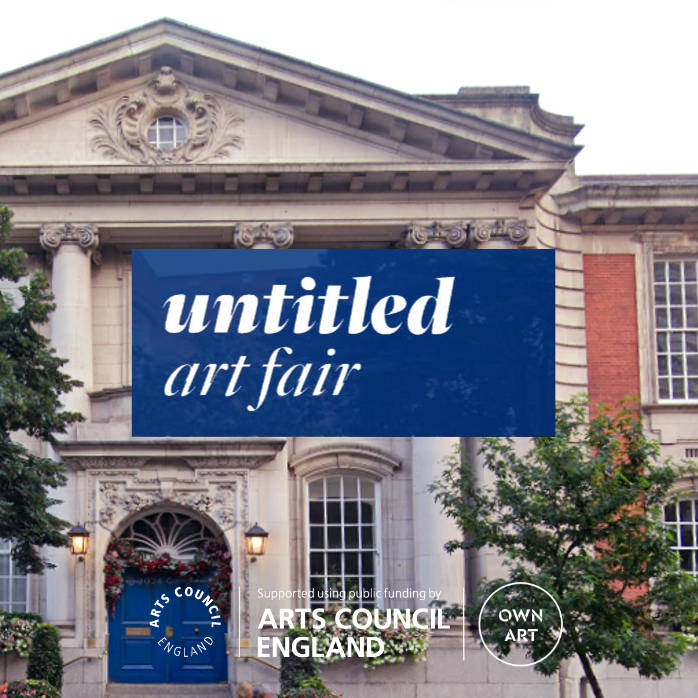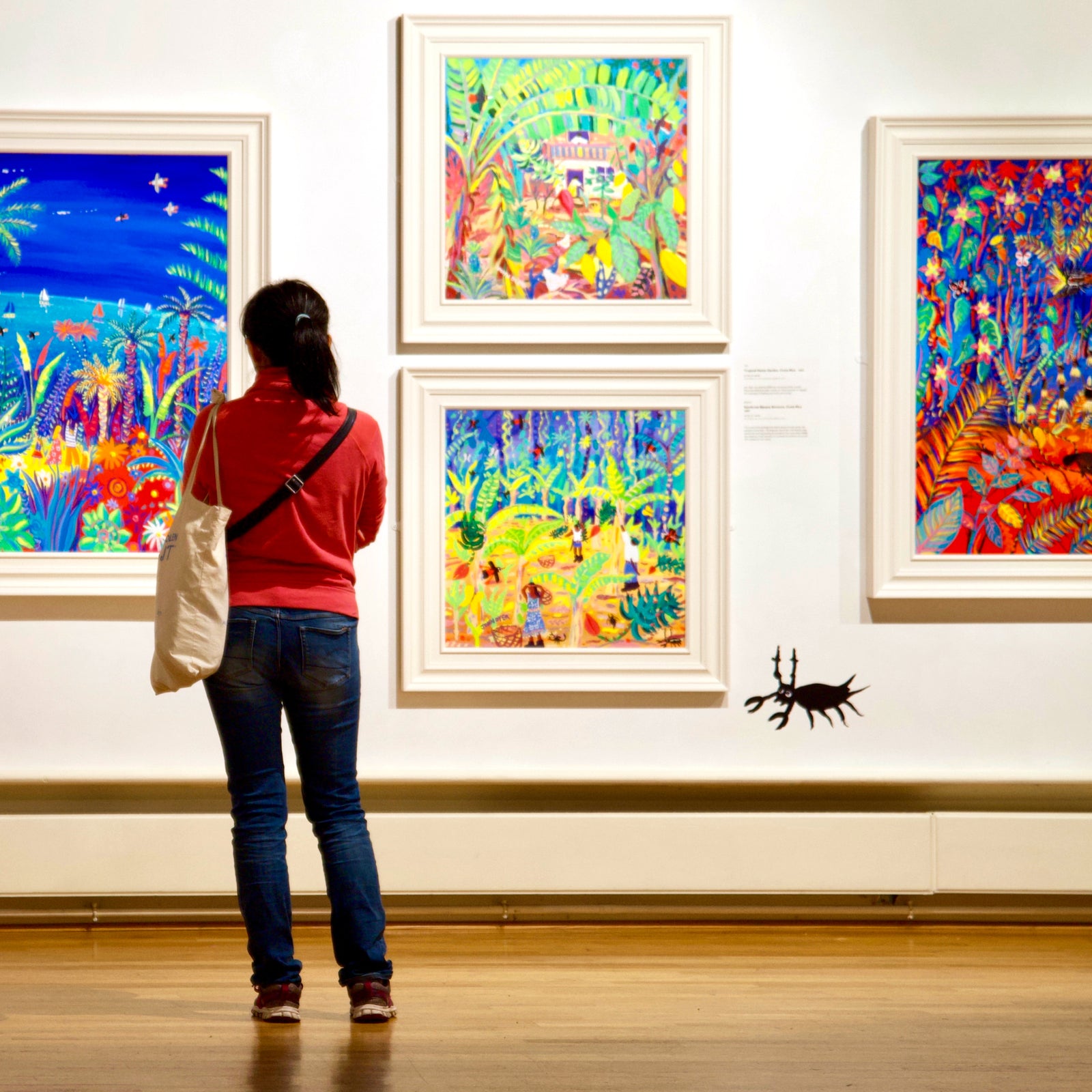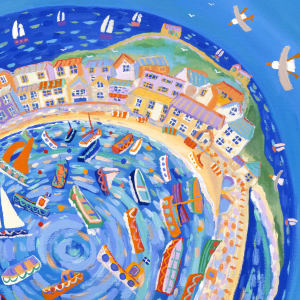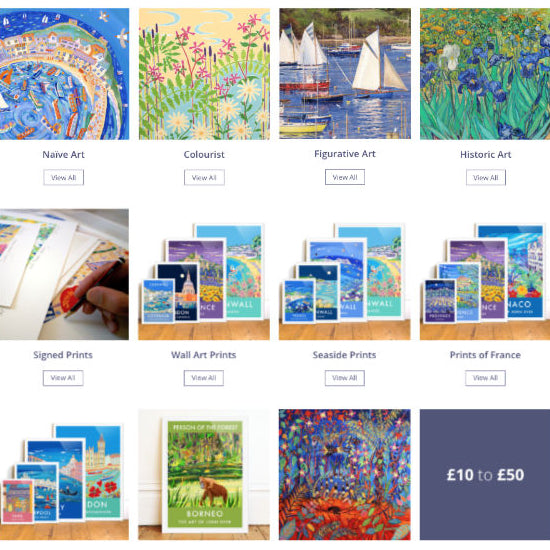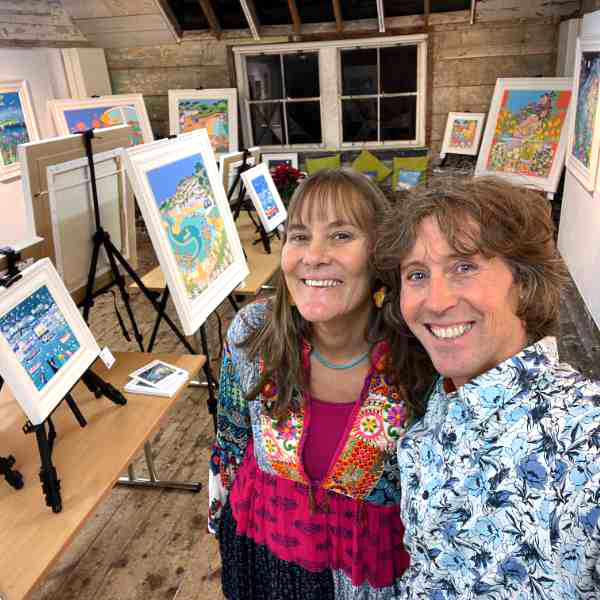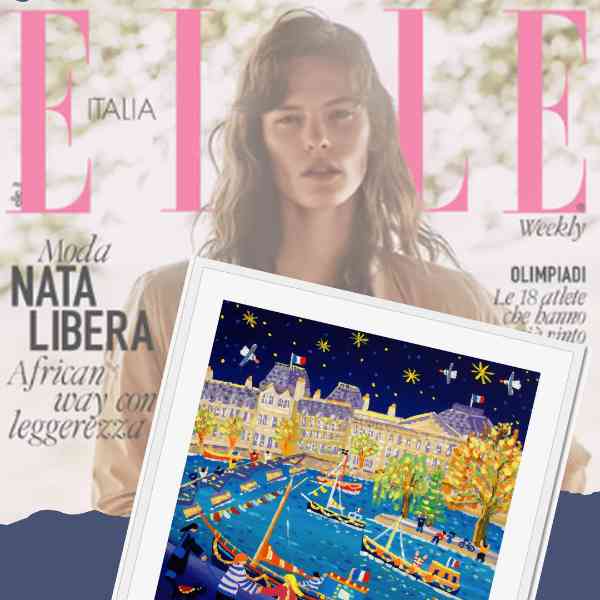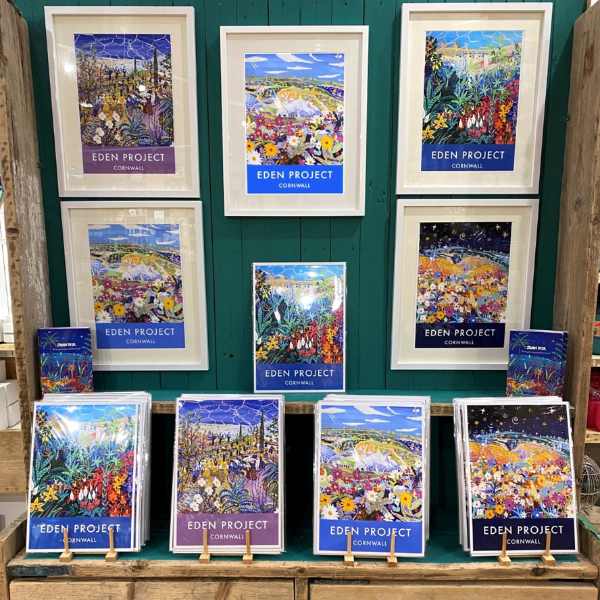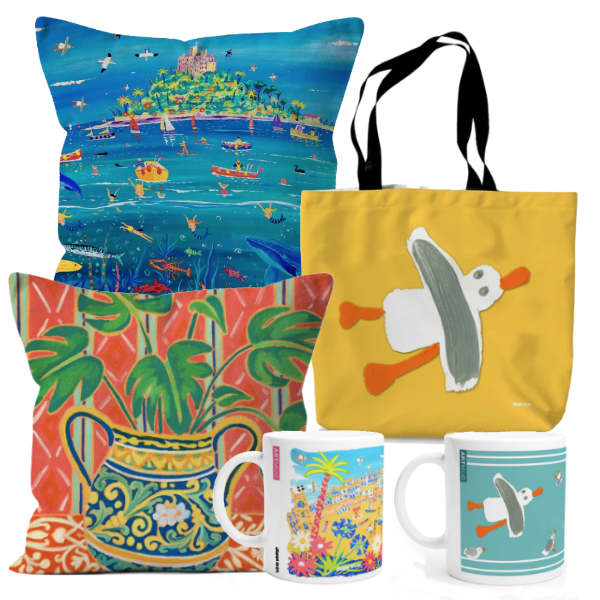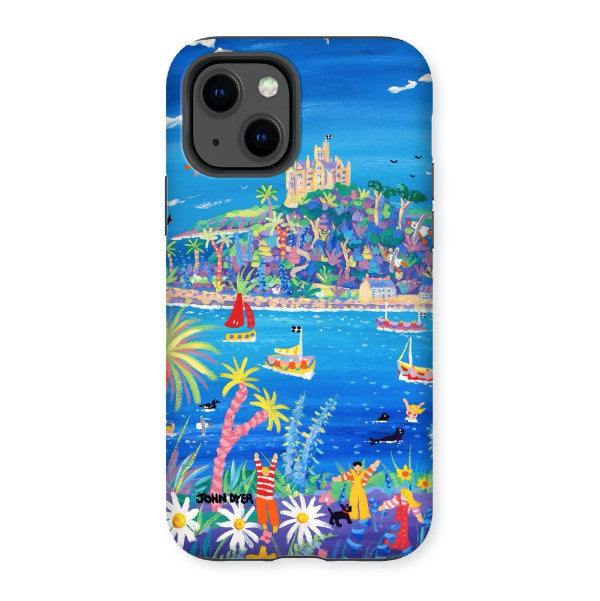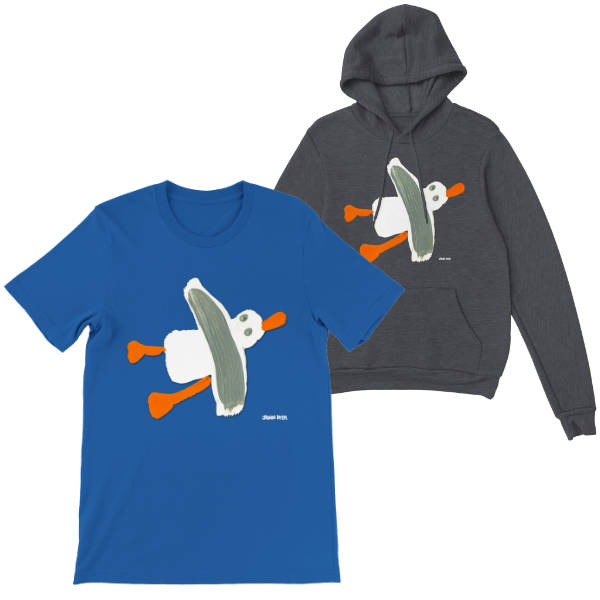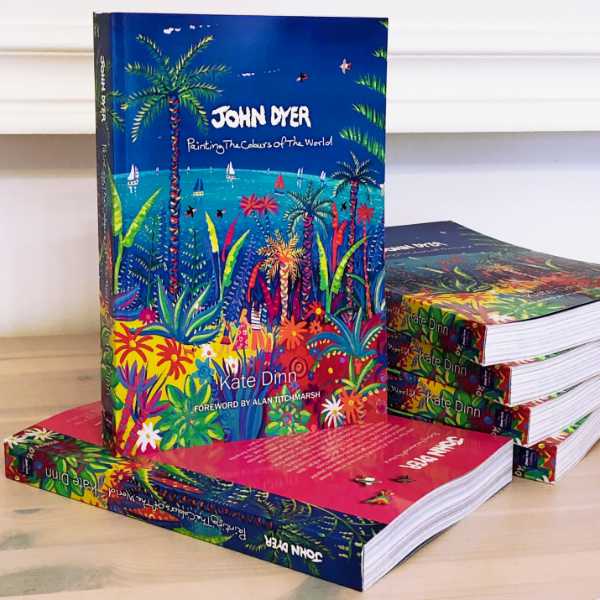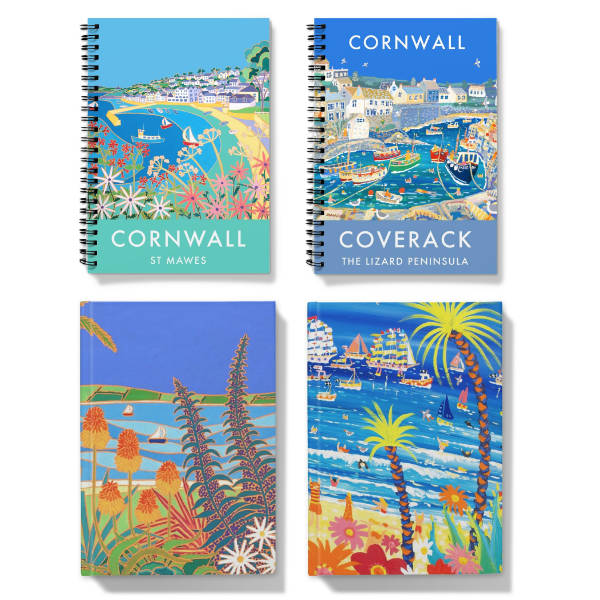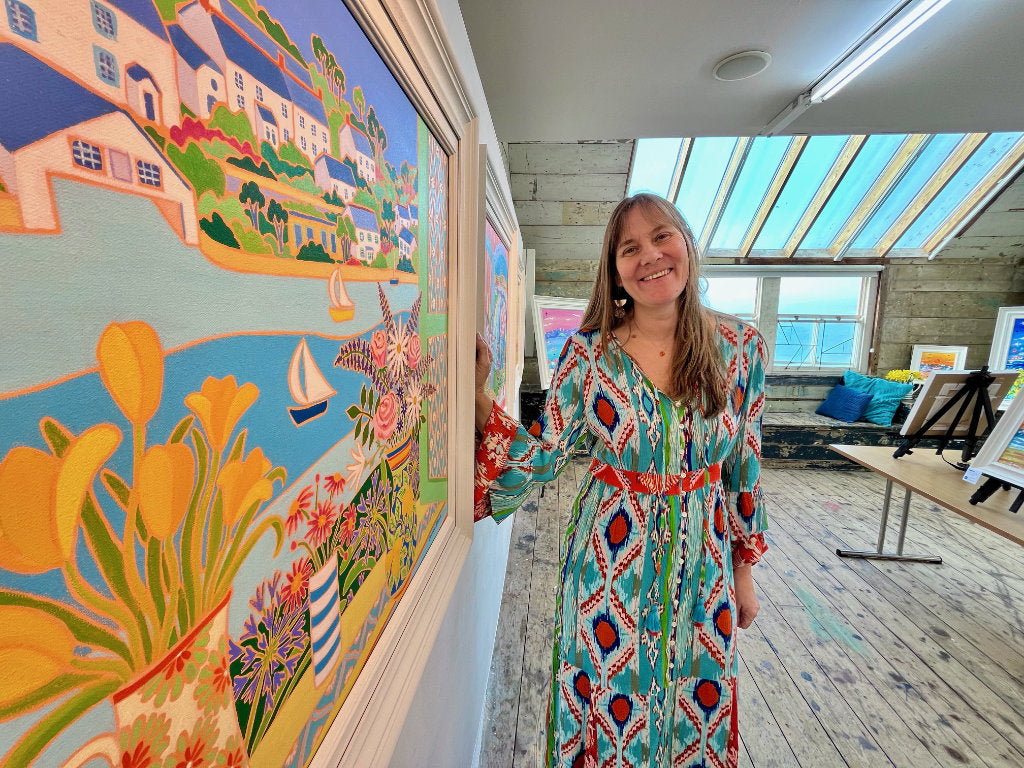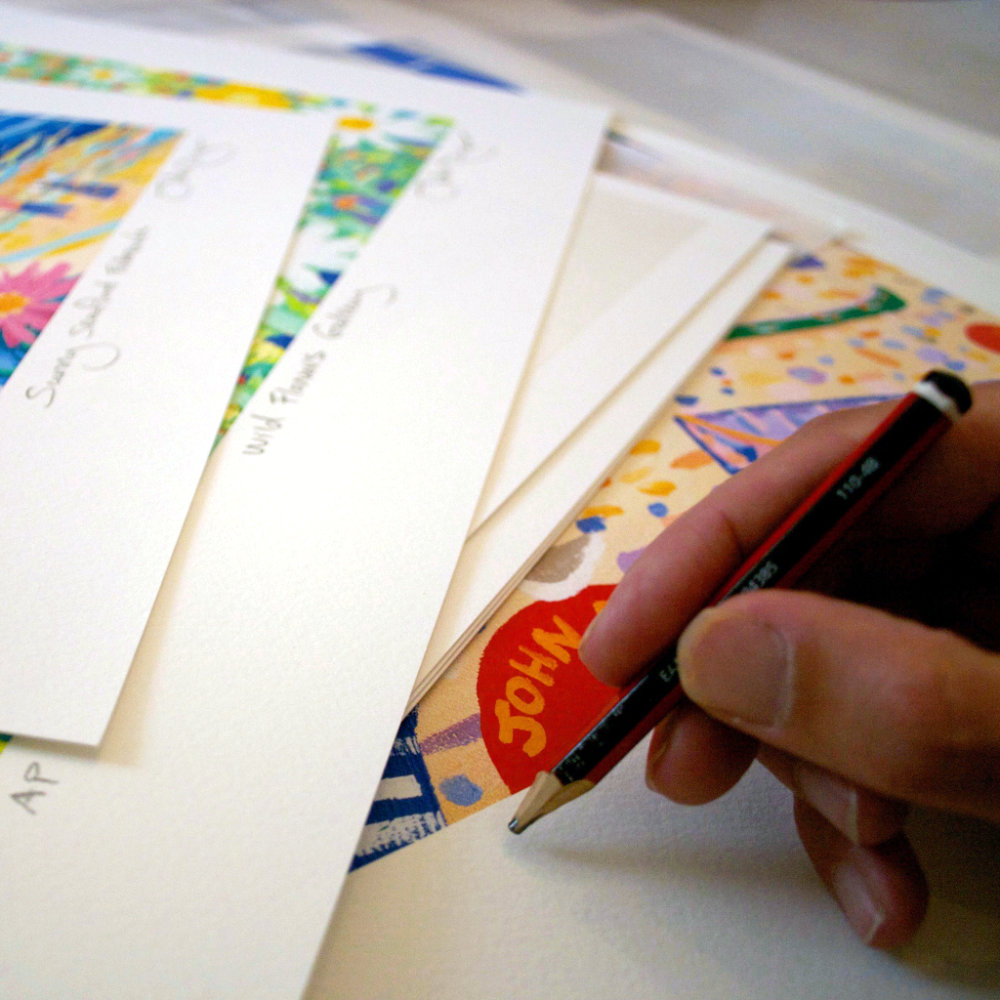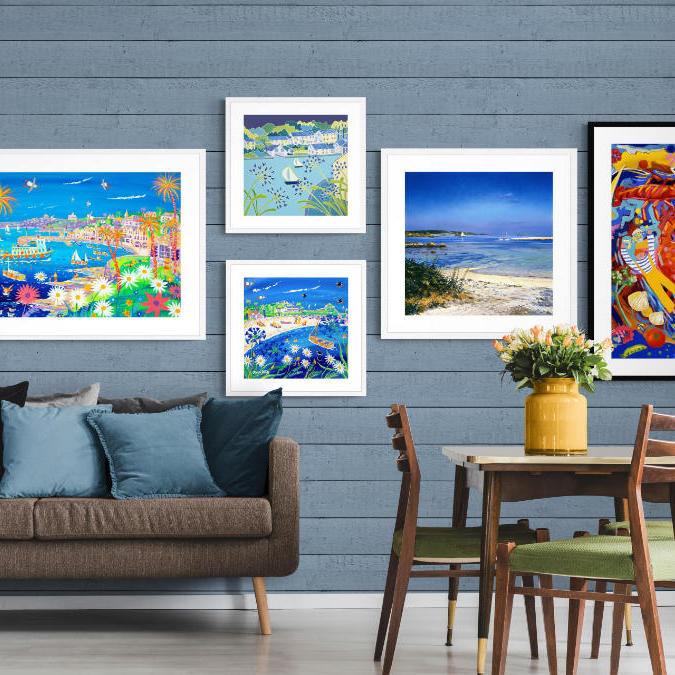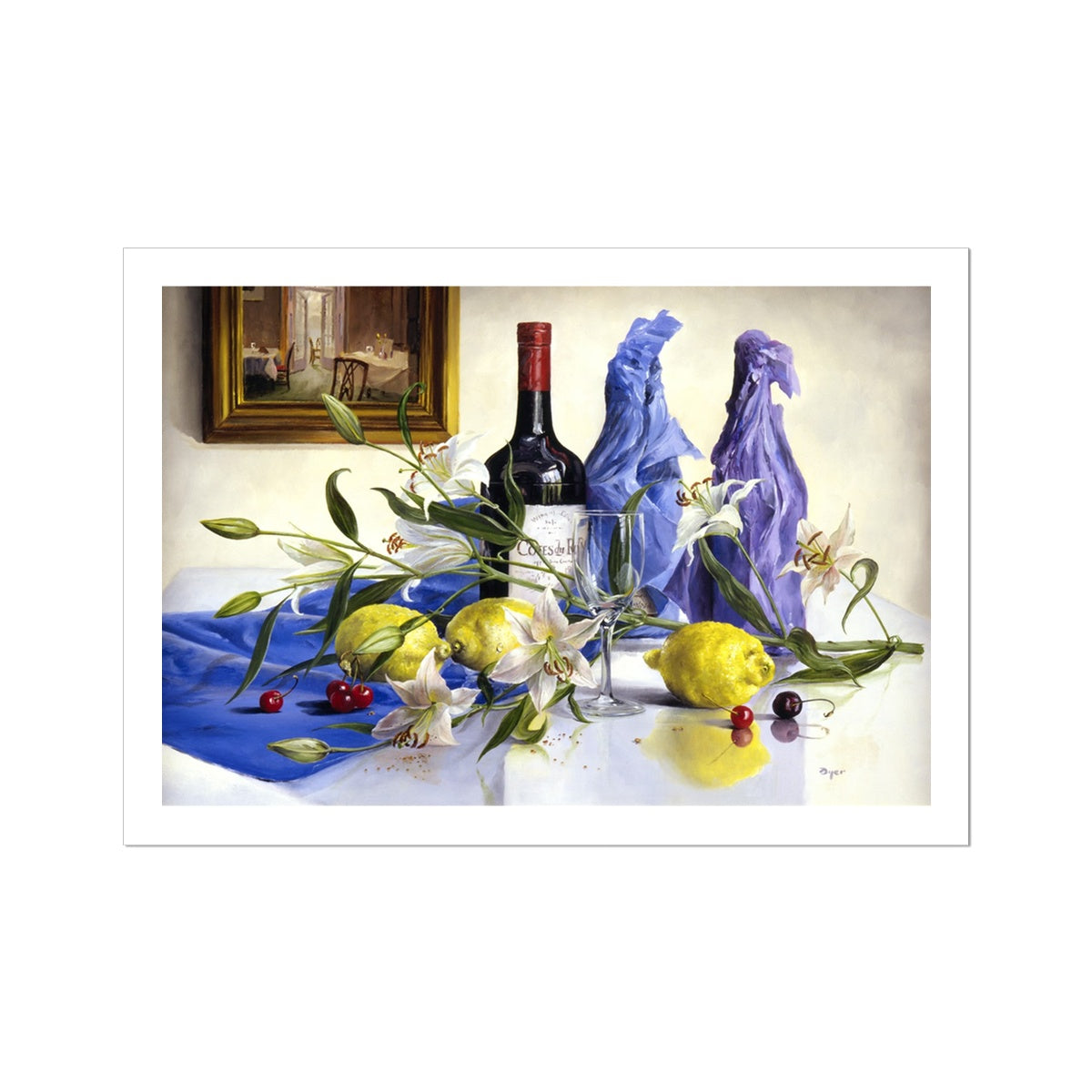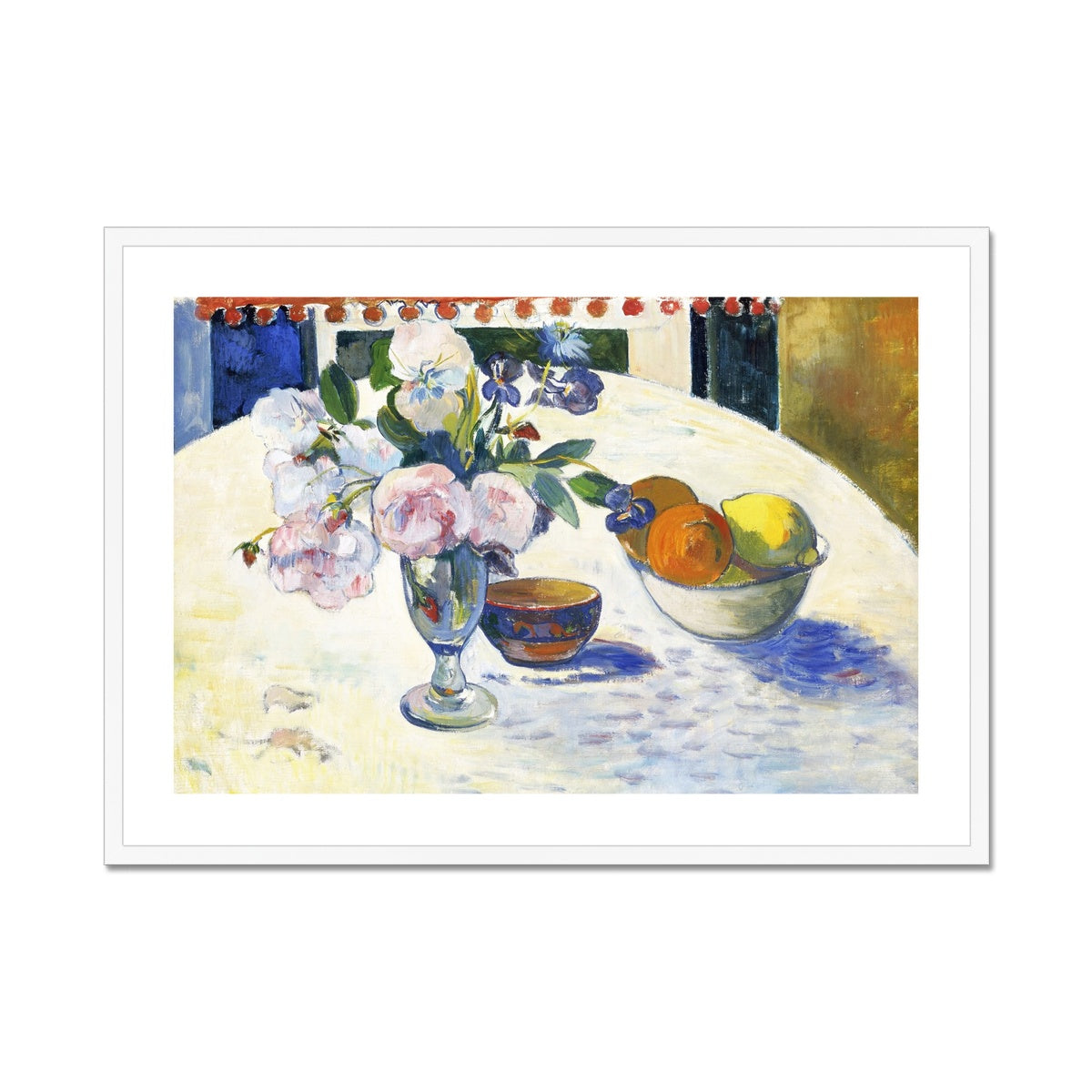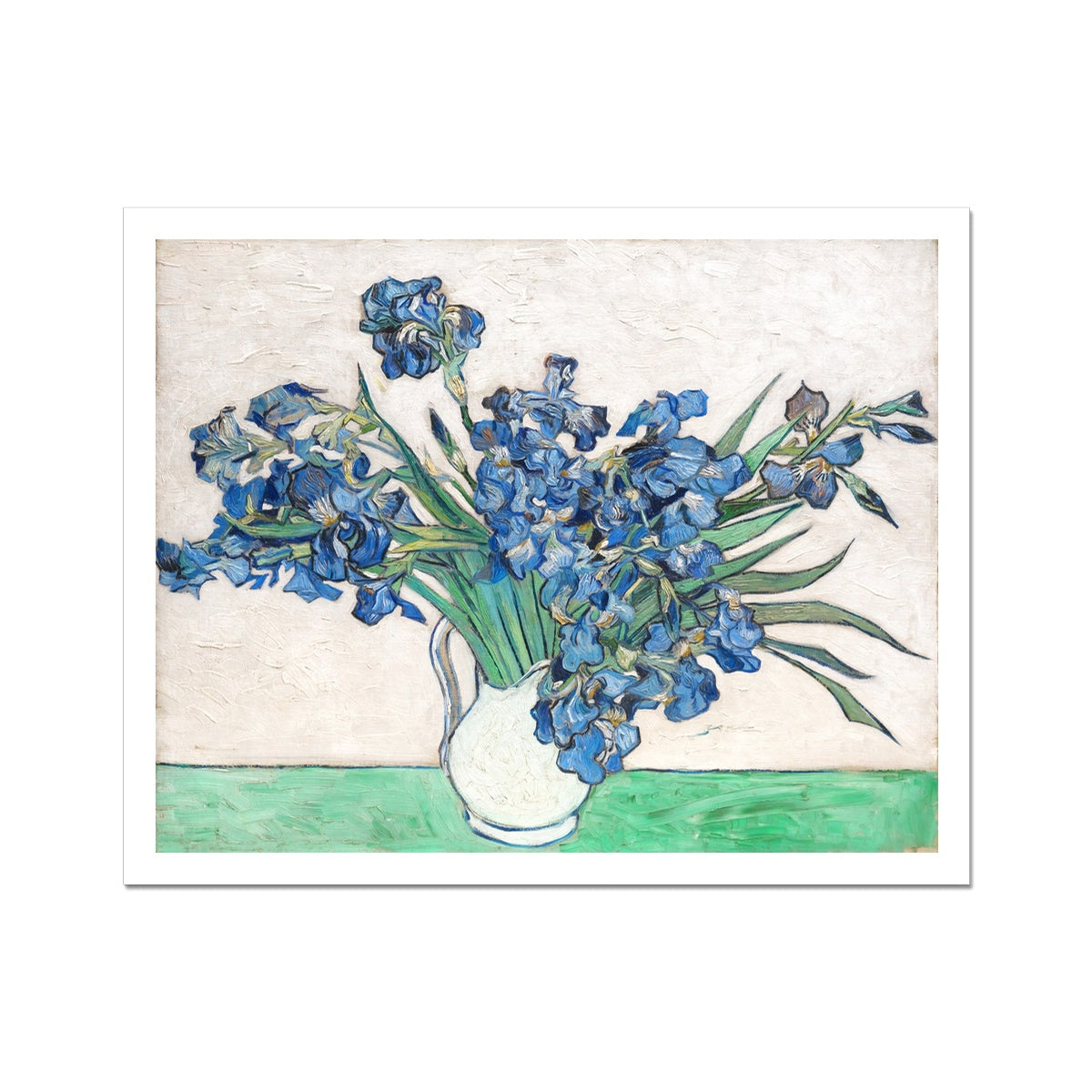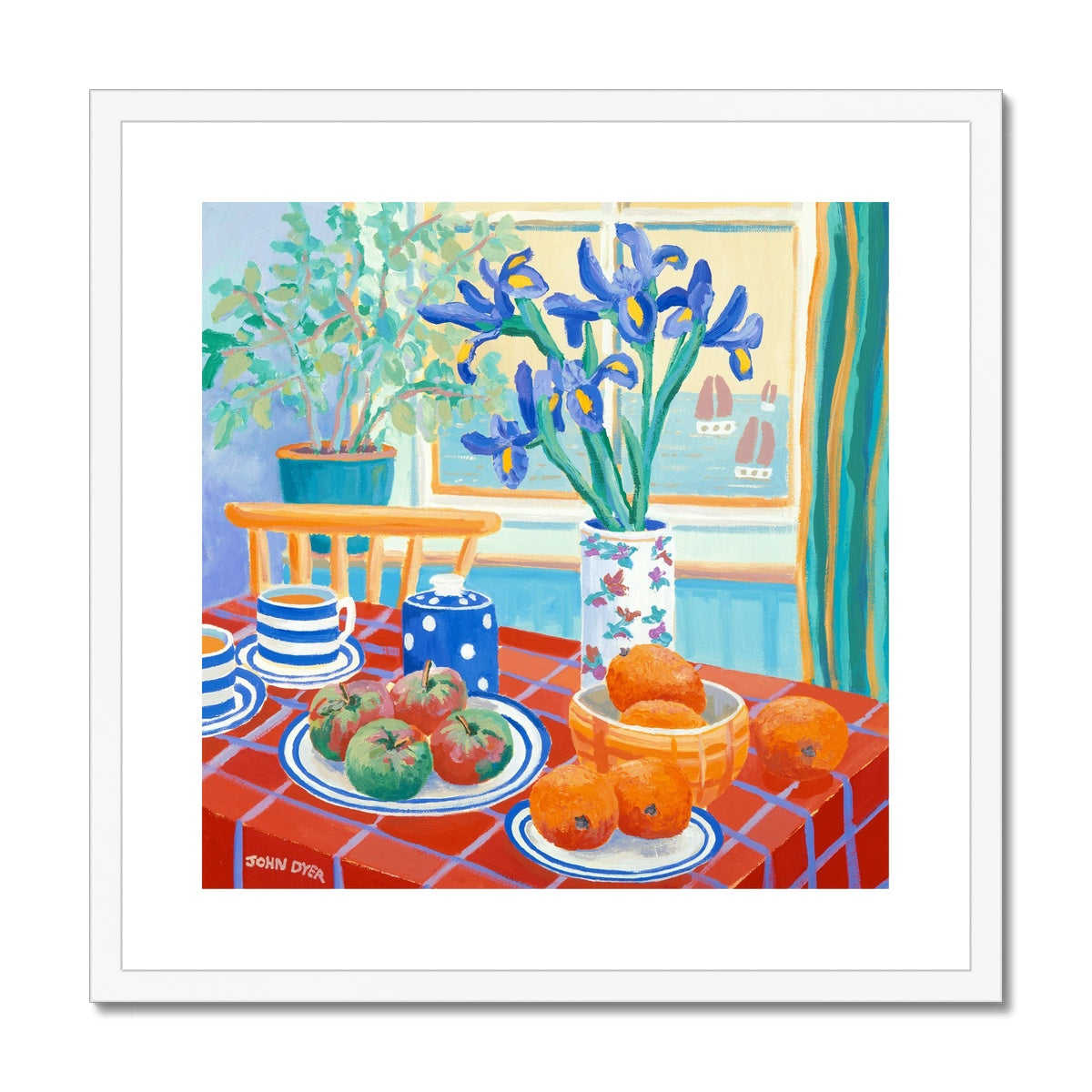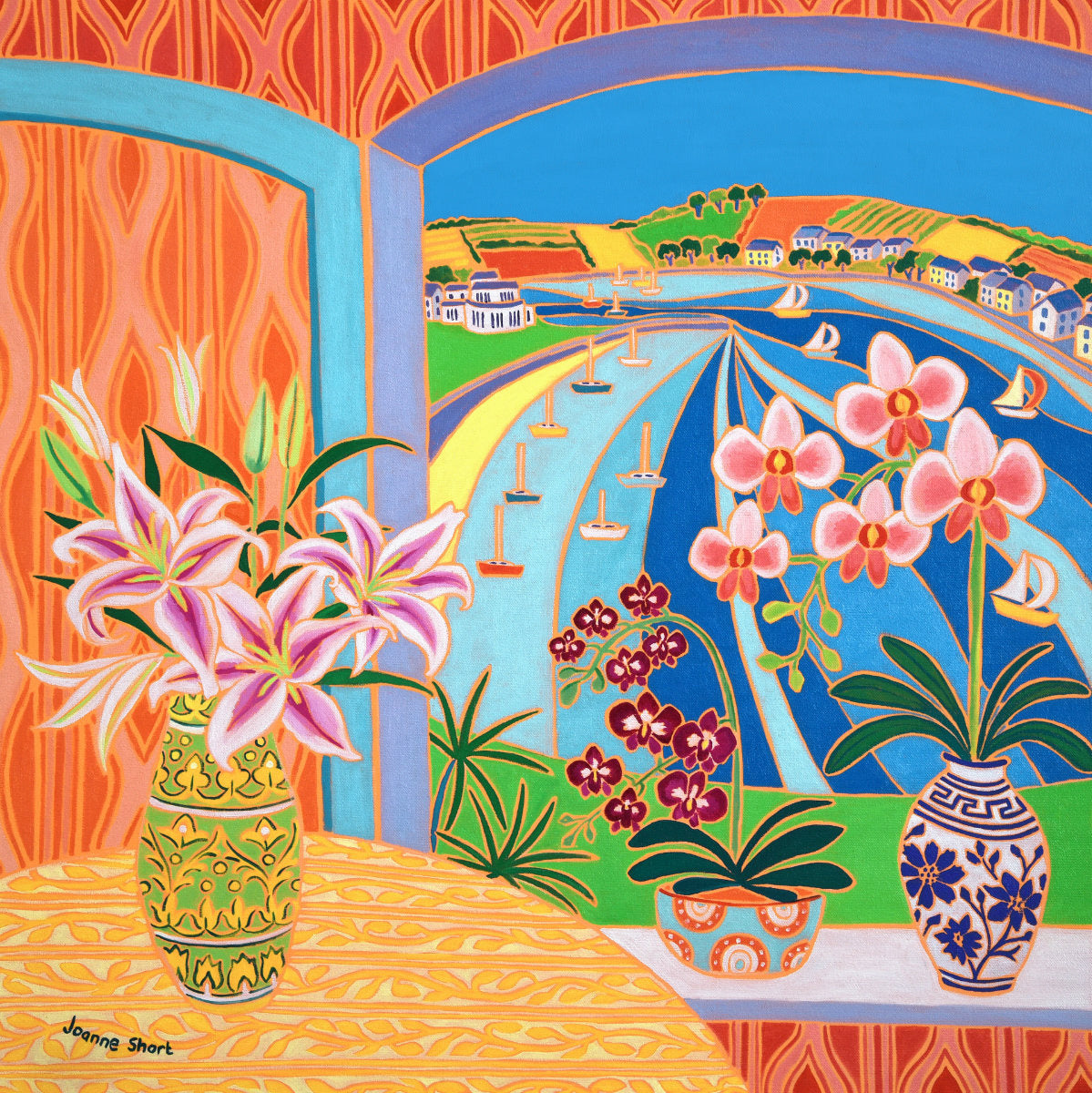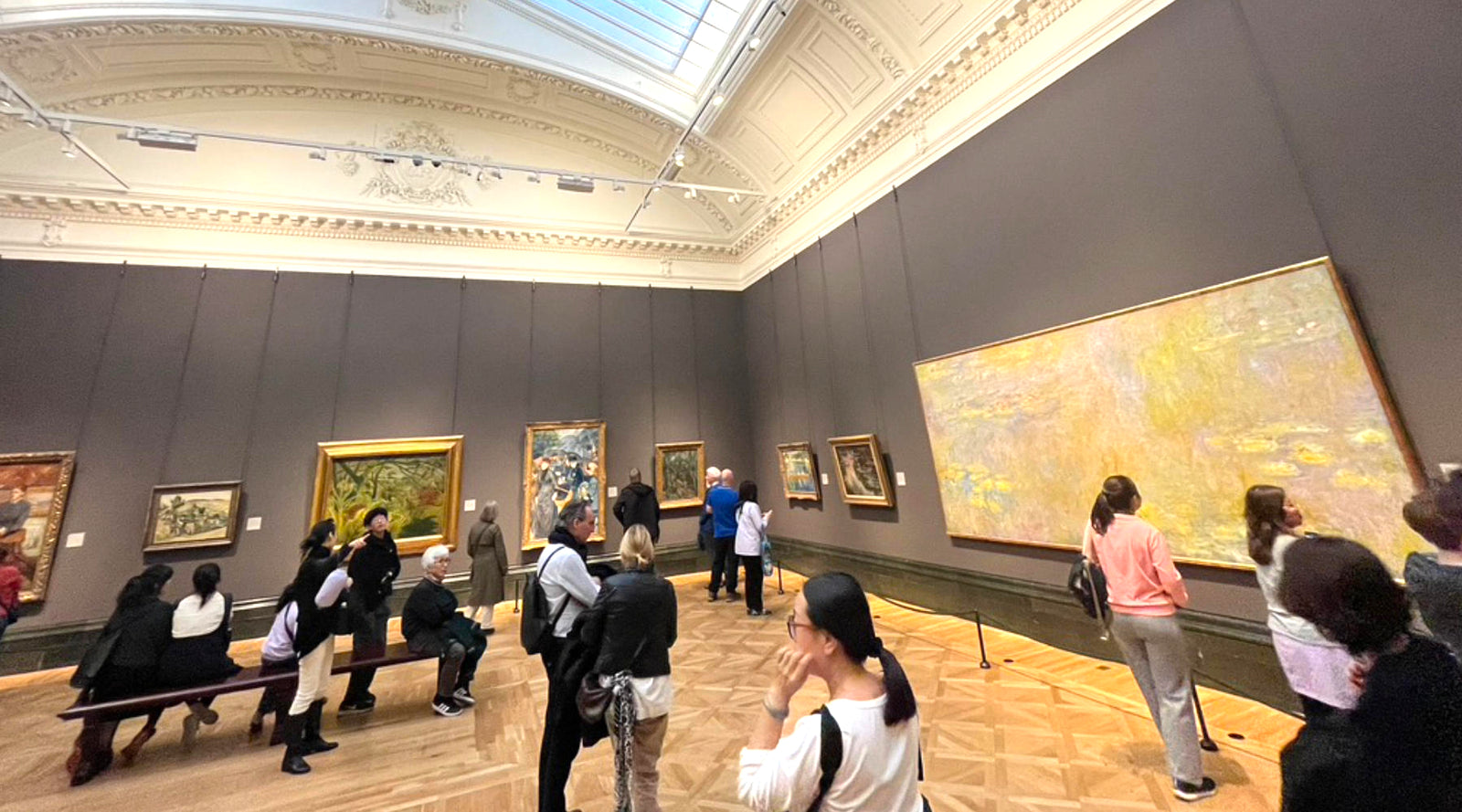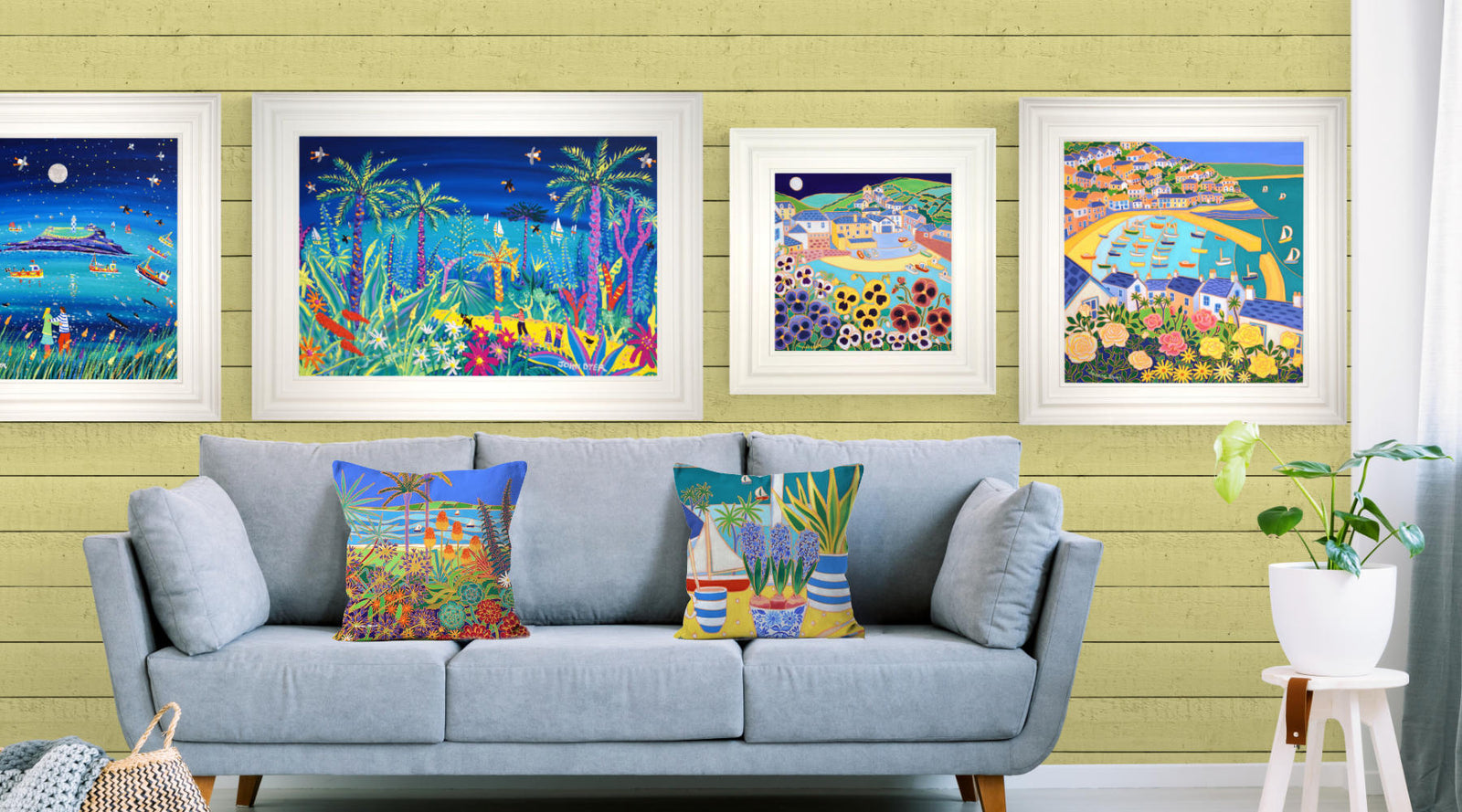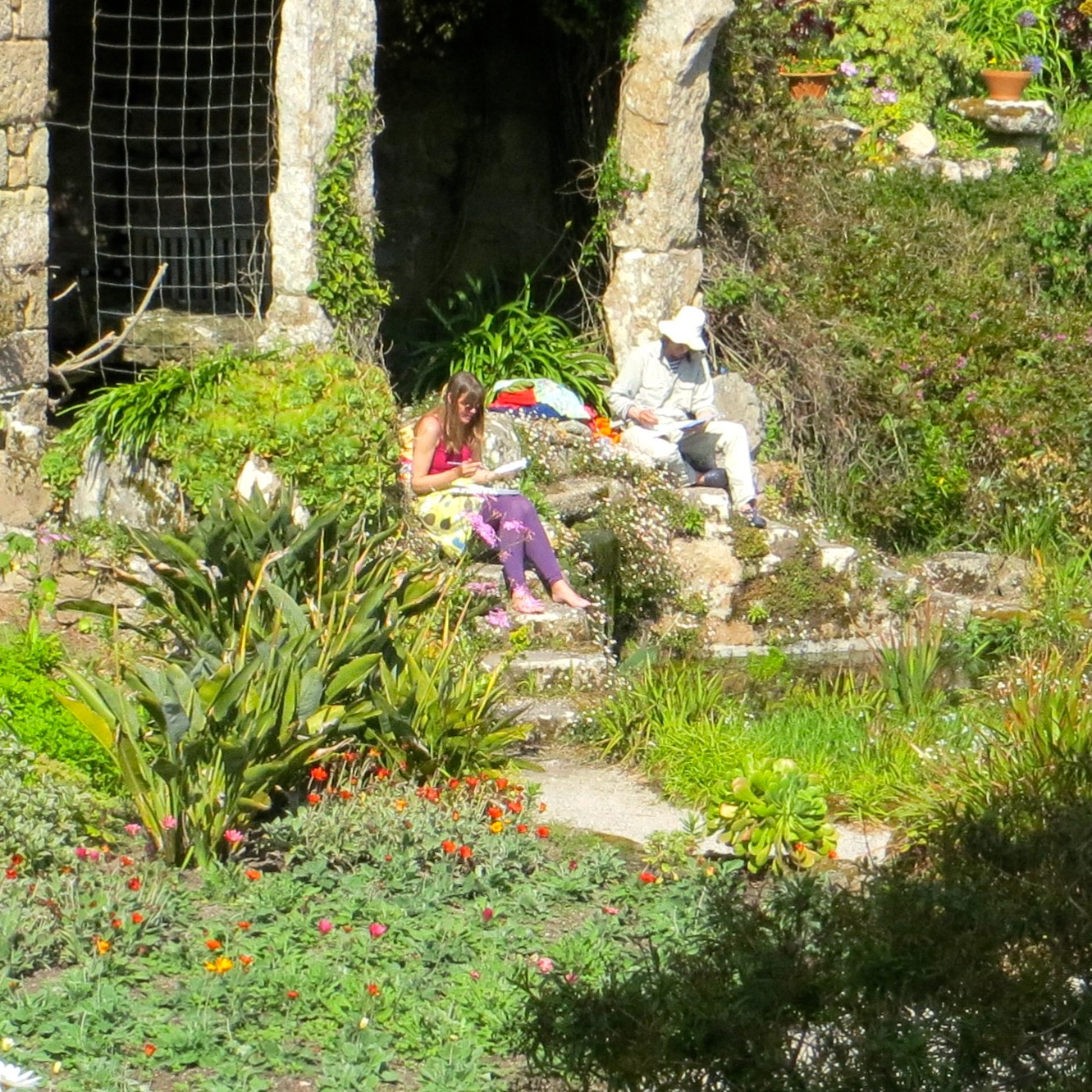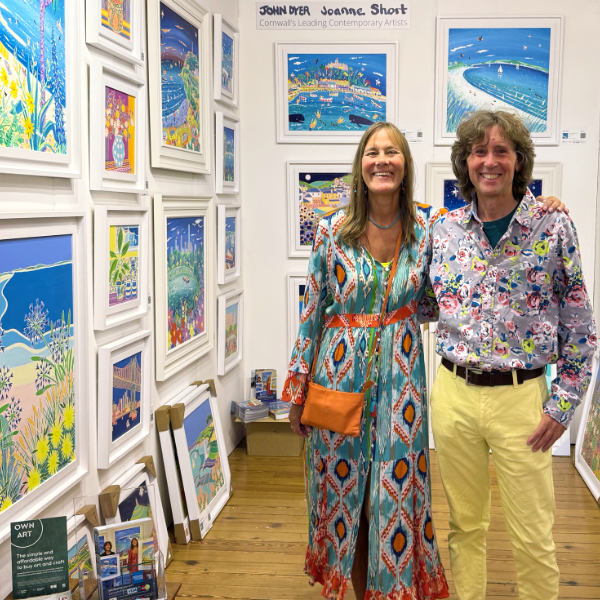
Above: Detail of an original still life oil painting, 'Colourful Vases of Flowers, Helford', by British artist Joanne Short. Available to buy online.
Here at The John Dyer Gallery we sell a wide range of still life prints and paintings by our gallery artists John Dyer, Joanne Short and Ted Dyer and a wide range of prints by historical artists. Find out about all things 'Still Life' in our latest blog.
Buy Still Life Paintings & Art Prints Online
Immerse yourself in the vibrant world of still lifes—a genre that breathes life into inanimate objects, transforming everyday items into captivating subjects. From blooming flowers to ripe fruits, and from precious jewels to simple kitchen utensils, still lifes encapsulate the very essence of life, portraying a diverse range of subjects in their many forms. Join us on this fascinating journey through the history of still life art, as we explore its evolution, its master artists, its diverse styles, and its enduring appeal.
Above: 'Blue and White Pottery in the Window, Trefusis, Falmouth', 18 x 18 inches, coastal still life oil on canvas. Garden Flower Painting by Cornish Artist Joanne Short. Buy Online
Key Takeaways
-
Still life paintings capture the diversity and emotional impact of inanimate objects, often conveying significant themes like mortality and wealth; contemporary artists continue to enrich this genre.
-
The history of still life painting is extensive, tracing back to Ancient Egypt and evolving through various cultural influences, artistic movements, and styles to become a diverse and vibrant field of art.
The Essence of Still Life Art
Above: Ted Dyer Fine Art Print. Open Edition Cornish Art Print. 'White Lilies, Lemons and Red Wine Still Life'. Buy online
The beauty of still life art lies in its diversity and emotional resonance. Still life paintings transport viewers to cherished places or memories by depicting inanimate objects in a wide array of styles, ranging from hyper-realism to abstract. An artist’s rendition of succulent fruits or vibrant wildflowers can bring immense joy, as seen in the work of John Dyer and Joanne Short and Ted Dyer.
Contemporary artists such as John Dyer have rejuvenated still life art, capturing the vibrancy of life in their works. His artwork, for instance, radiates joy, showcasing how still life art serves as a significant celebration of the surrounding world.
Defining the Genre: What Constitutes a Still Life?
Above: John Dyer Framed Open Edition Still Life Cornish Art Print. 'Cafe View, St Ives'. Buy online
The still life art genre captivates with its remarkable diversity. A still life painting portrays predominantly motionless objects, often arranged in an aesthetically pleasing manner. Historically the subject matter spans from organic items such as dead game and fruits, to artificial items like household objects. What distinguishes still life, however, is its extraordinary ability to transform the ordinary into a visual feast, making even the most common still life subjects captivating.
Over time, the genre has transformed, with varying interpretations introduced by different cultures. For instance, Spanish still-life paintings often depicted plain dead animals and uncooked fruits and vegetables against plain or bleak backgrounds, while Dutch still life paintings showcased opulent banquets surrounded by ornate fabric or glass, featuring various life subjects. The bodegón, a Spanish genre of still life art, went a step further, portraying food items and beverages typically arranged on a basic stone surface, sometimes incorporating individuals in a household environment.
The Symbolic Language of Objects
Above: Ted Dyer Fine Art Print. Open Edition Cornish Art Print. 'Peaches and Dog Roses Still Life'. Buy online
The objects depicted in still life paintings, often everyday objects, are more than just lifeless items—they can also be carriers of symbolic meanings. They often represent themes such as mortality, wealth, and the passage of time. Over the years, the symbolism in still life paintings has evolved. Earlier periods often integrated religious symbolism with biblical motifs, while the Dutch period emphasized Memento Mori symbolism to depict the transience of life.
Composition and Perspective in Still Lifes
In still life paintings, composition and perspective hold significant importance. This genre offers artists great liberty to experiment with the arrangement of elements within a painting’s composition. Through the strategic use of:
-
vanishing points
-
foreshortening
-
overlapping
-
lines
-
colours
-
shading
Artists can manipulate perspective to create an impression of depth and achieve specific artistic outcomes.
A Stroll Through History: The Evolution of Still Life Painting
As rich and vibrant as the genre itself, the history of still life painting is intriguing and shares some connections with history painting. Its roots trace back to the highly codified mortuary rituals of Ancient Egypt, where depictions of food, drink, and other objects bearing symbolic meaning in the afterlife were included in their tombs. The genre further developed through the remarkable proficiency of Greek vase painters in portraying ordinary objects and animals.
Over the centuries, still life painting has evolved and expanded, influenced by various artistic movements and styles. This journey through history has shaped the genre as we know it today, making it a diverse and captivating field of art.
From Middle Ages to Renaissance Revelations
Still life art evolved significantly during the Middle Ages and Renaissance periods. It was a time when the genre experienced a resurgence, witnessing heightened realism and intricate arrangements of flowers and insects in the margins of illuminated manuscripts. The influence of the Low Countries in the field of botany and its portrayal in art played a significant role in this revival.

Above: Jacob Vosmaer (Dutch, 1584-1641), A vase with Flowers
Advancements in painting techniques, particularly the development of oil painting by artists like Jan van Eyck, further enriched the realism in still life painting. The illuminated manuscripts of the Middle Ages featured still-life elements, primarily flowers, but also animals and inanimate objects, depicted with growing realism. The genre originated and gained considerable popularity in the contemporary Low Countries, now known as Belgium and the Netherlands, as opposed to southern Europe.
Golden Age Glory: Seventeenth Century Mastery
The golden age of still life painting emerged in the seventeenth century. Dutch and Flemish artists mastered the genre, exploring themes of luxury and mortality. Their works conveyed didactic messages and included opulent displays of luxury items. Some notable examples include:
-
Jacques de Gheyn II’s Vanitas Still Life of 1603
-
Pieter Claesz’s Still Life with a Skull and a Writing Quill of 1628
-
Abraham van Beyeren’s Still Life with Lobster and Fruit from the 1650s.
Still life paintings appealed to the expanding Dutch middle classes due to the ongoing Northern tradition of intricate realism and concealed symbols. This era of opulence and symbolism left a lasting legacy, influencing future generations of artists and shaping the genre’s development.
Modern Interpretations: Twentieth Century Innovations
A new era of innovation in still life art was introduced in the twentieth century. Avant-garde movements pushed the boundaries of the genre, bringing new interpretations and techniques to the fore. Artists like Henri Matisse reduced the rendering of still-life objects to bold, flat outlines filled with bright colours, signifying a significant departure from traditional still life presentation.
The Artists Behind the Easel: Celebrated Still Life Painters
Every great still life painting is a testament to an artist’s keen eye for detail and passion for encapsulating the essence of life. The genre has been graced by numerous celebrated painters, including:
-
Van Gogh
-
Henri Matisse
-
Paul Gauguin
Above: Paul Gauguin Still Life Framed Open Edition Art Print. 'Flowers and a Bowl of Fruit'. Garden Flowers. Buy online
Renowned for his impressionist landscapes, artist Ted Dyer has created a lasting legacy in the realm of still life art. His unparalleled expertise with the medium of oils has earned him recognition as a modern master.
Meanwhile, contemporary artists like John Dyer have continued to push the boundaries of the genre, creating vibrant and dynamic works that celebrate the essence of life.
Masters of the Past: Pioneers and Their Legacy
Artists like Clara Peeters, Osias Beert, and Jacob Van Es were pioneers who set the foundation for still life art. Their works, like:
-
Fede Galizia’s Still Life with Apples on a Majolica Tazza, together with Medlars and White Currants
-
Clara Peeters Still Life with Cheeses, Artichoke and Cherries (circa 1625)
-
Jacob Foppens van Es (Flemish, c. 1596 – 1666), Still Life with a Lobster and a Guilded Tazza are considered masterpieces of the genre.
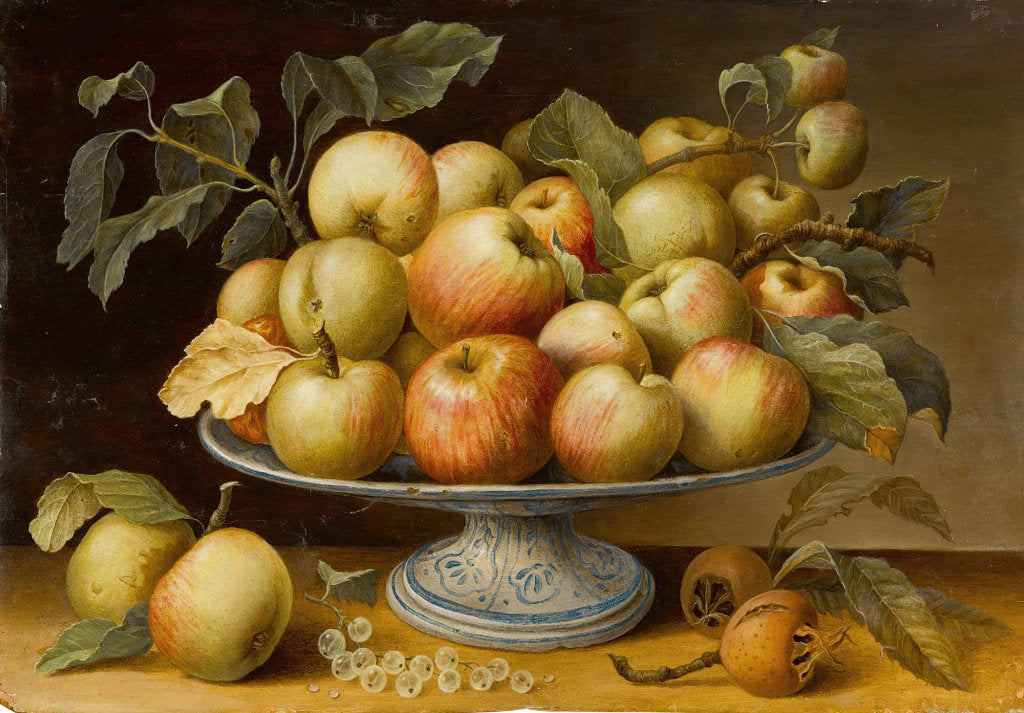
Above: Fede Galizia’s Still Life with Apples on a Majolica Tazza, together with Medlars and White Currants
These early masters played a crucial role in establishing still life as a distinct genre in Western painting, contributing significantly to the development of western art. They pioneered techniques such as Dutch-style realism, expressive flower and vase paintings, and the use of symbolic objects in ‘vanitas’ paintings.
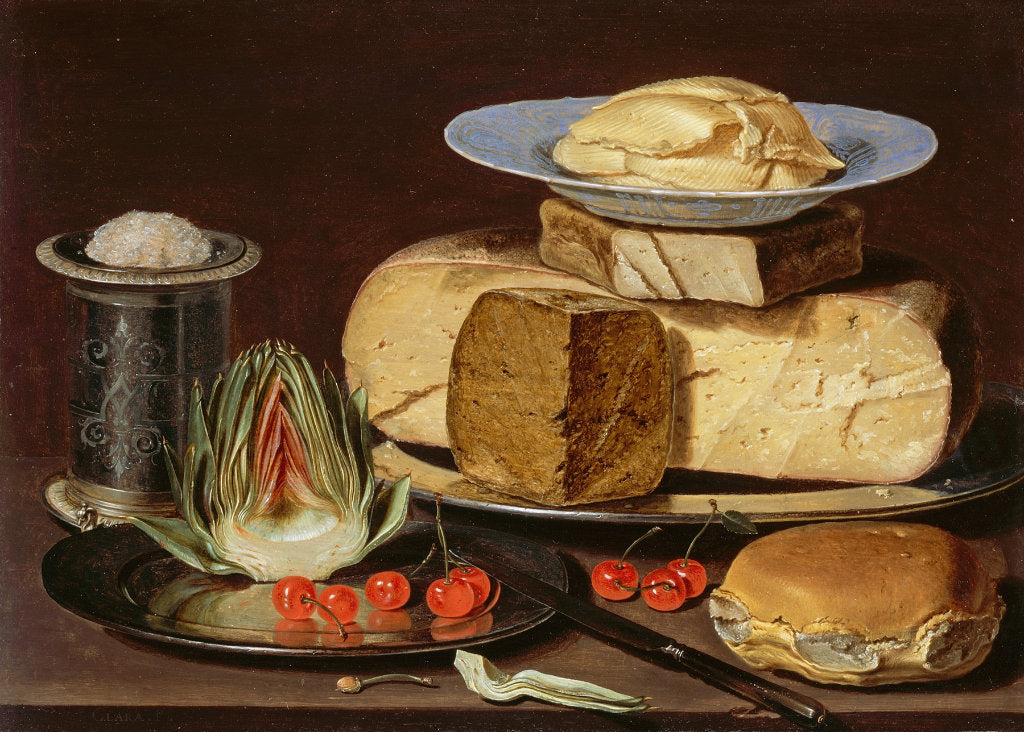
Above: Clara Peeters Still Life with Cheeses, Artichoke and Cherries (circa 1625)
Impressionist and Post-Impressionist Contributions
Still life art was imbued with a fresh perspective by the Impressionist and Post-Impressionist movements. Artists like Paul Cézanne, Paul Gauguin and Vincent van Gogh experimented in the genre, revolutionizing the approach by focusing on the geometric structure of objects and utilizing multiple viewpoints.
Above: 'Irises'. Garden Flowers. By Vincent Van Gogh. Open Edition Fine Art Print. Buy online
These artists broke away from traditional notions of representation, aiming to create a sense of monumentality and coherence in their compositions. They experimented with colour and light, utilizing vibrant natural colours and representing the solidity and depth of objects in their still life compositions.
The Genre's Many Faces: Types of Still Life Paintings
With various types of paintings reflecting its many facets, still life art is a diverse genre. Some examples include:
-
Floral compositions that depict the bounty of nature
-
Fruit compositions that showcase the beauty and abundance of different fruits
-
Vanitas paintings that serve as a reminder of the transience of life and the inevitability of death
-
Memento mori paintings that symbolize the fragility of life and the need to contemplate mortality
The genre of still life art is rich with variety and depth.
Another fascinating aspect of the genre is trompe-l’œil, a technique that creates optical illusions, tricking the viewer’s eye and challenging their perception of reality. Each type of still life painting brings its unique flavour to the genre, showcasing its versatility and breadth.
The Bounty of Nature: Floral and Fruit Compositions
Above: John Dyer Framed Open Edition Still Life Cornish Art Print. 'Blue Irises on a Cornish Table'. Buy online
The beauty and bounty of nature is celebrated through floral and fruit compositions. These paintings showcase a variety of flowers and fruits, focusing on richness and the attributes of form, colour, and texture. Artists employ techniques such as harmony, balance, light and shadow, colour mixing, and layering to bring these compositions to life.
The portrayal of floral and fruit compositions has evolved over time. In the early 1600s, floral still lifes, characterized by highly refined execution and symbolism, were particularly prominent. They often highlighted abundance through the depiction of a variety of objects, including fruits and flowers.
Collecting and Displaying Still Life Artwork
Collecting and displaying still life artwork is itself an art form. From understanding the art history and appeal of the genre to identifying personal preferences and curating exhibits, the process involves a blend of knowledge, passion, and discernment.
Above: 'Lilies and Orchids, Green Bank, Falmouth’. 24x24 inches still life oil on canvas. Garden Painting of Cornwall by Cornish Artist Joanne Short, £1,550. Buy online
Always choose images that you love and that evoke a positive emotion. Make sure that the colours suit the environment where the piece is to be hung and that the size is right for the space.
Starting a Collection: Tips for Aspiring Collectors
Embarking on the journey of starting a still life art collection can be exhilarating. Here are some initial steps to consider:
-
Determine a budget
-
Find inspiration
-
Ensure a personal connection with the artwork
-
Adhere to the established budgetCurating an Exhibit: Showcasing Still Lifes
Curating a still life art exhibit involves several steps:
-
Define a theme for the room.
-
Select unique artworks that fit the theme.
-
Plan the room layout to create an engaging display.
-
Optimize the space to showcase the paintings effectively.
Each step is integral to creating a captivating exhibit that highlights the beauty and variety of still life paintings.
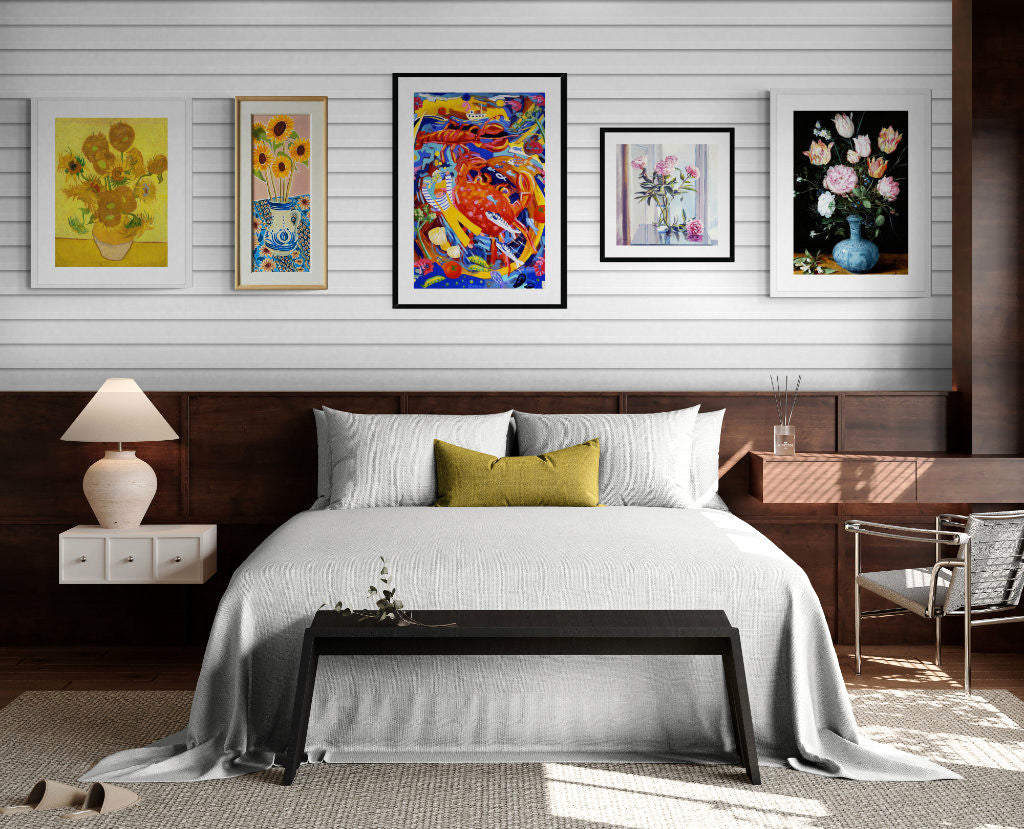
Above: A selection. of still life prints by artists John Dyer, Joanne Short, Ted Dyer, Van Gogh and Jan Breughel the Elder, all available at the John Dyer Gallery
Creating a visual narrative for a successful still life art display in your home involves:
-
Arranging paintings in a manner that conveys a story or evokes an emotional reaction
-
Selecting a suitable space for your display
-
Considering lighting arrangements.
With careful planning and a creative approach, you can curate an atmosphere in the room that showcases the beauty and diversity of your still life paintings.
Summary
From its ancient origins to its contemporary reinterpretations, still life art invites us to see the beauty in the ordinary. It offers a window into the world, capturing the essence of life and the impermanence of earthly pleasures. Whether you’re an aspiring collector, an art enthusiast, or simply a lover of beauty, the world of still life art has much to offer. So dive in, explore its many facets, and let it inspire you to see the world in a new light.
Frequently Asked Questions
What defines a still life?
A still life is defined as a collection of inanimate objects arranged in a specific way, often depicted in paintings or drawings. These objects typically include fruits, flowers, or vessels, and offer a new perspective on ordinary items.
What is the meaning of the phrase still lives?
Still life artworks typically feature objects like fruit, flowers, and everyday items as the main focus of interest, originating from the Dutch term 'stilleven' around 1650. This type of art does not typically portray animals or people.
What is an example of a still life?
A common example of a still life would be a vase with flowers or a bowl of fruit, as these are objects commonly found in still life art. Other examples include fishing supplies, a tea set, and cut flowers, fruit, vegetables, and more.
How has still life art evolved over time?
Still life art has evolved over time, influenced by various artistic movements and styles, each bringing unique interpretations and techniques to the genre.
Who are some notable artists in the field of still life painting?
Notable artists in the field of still life painting include Clara Peeters, Osias Beert, Jacob Van Es from the past, and John Dyer, Joanne Short and Ted Dyer among contemporary artists.


